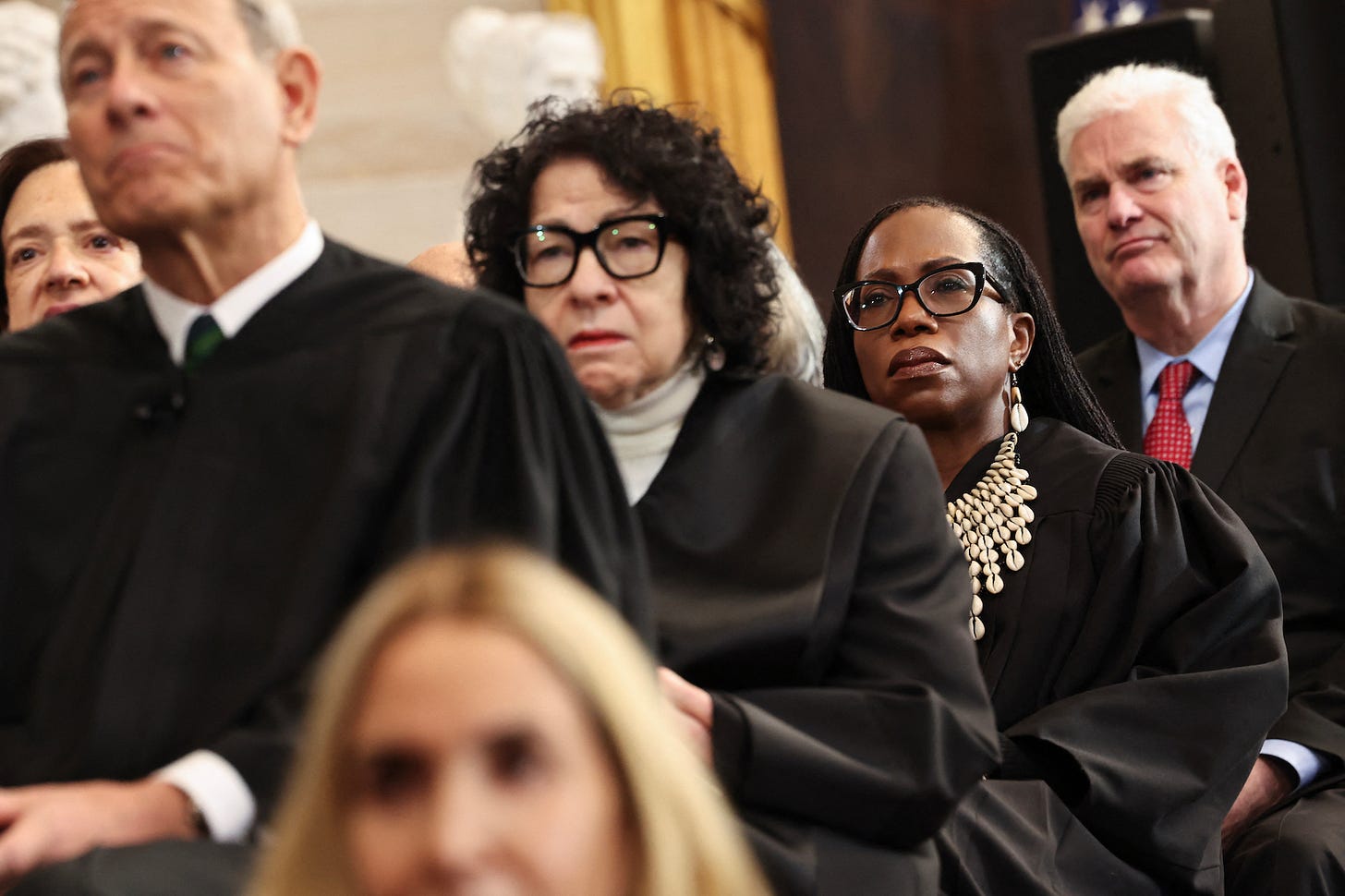SCOTUS's "unbearable options" for 530,000 immigrants
Here's why Justice Ketanji Brown Jackson found the Supreme Court's order leaving half a million Latin American immigrants vulnerable to deportation so off-base.

Rights erode in silence. Our paid readers get the full context — help keep the spotlight where it belongs with news that empowers you with options to act!
The Supreme Court’s decision to grant the Trump administration’s request to revoke parole status from 530,000 immigrants gave more than a half-million people, in the words of the dissenting justices, “two unbearable options.”
“On the one hand, they could elect to leave the United States and, thereby, confront ‘dangers in their native countries,’ experience destructive ‘family separation,’ and possibly ‘forfei[t] any opportunity to obtain a remedy based on their . . . claims,’” Justice Ketanji Brown Jackson wrote, in a dissent joined by Sonia Sotomayor. “On the other [hand], they could remain in the United States after parole termination and risk imminent removal at the hands of government agents, along with its serious attendant consequences.”
That was the effect of the Supreme Court’s decision to at least temporarily let Donald Trump rescind the Joe Biden-era program Parole Processes for Cuba, Haiti, Nicaragua, and Venezuela (CHNV). The program was designed to protect people fleeing countries experiencing war and upheaval.
The advocacy groups Justice Action Center and Human Rights First helped lead this litigation, and both nonprofits have resources for defending immigration parole.
Jackson and Sotomayor were the only justices to publicly note that they would have left the program in place for now, even if the Supreme Court ultimately decided that Trump has the power to reverse this protected status.
“The bottom line is this: Our decision to issue a stay (or not) involves more—much more—than merely forecasting the eventual victor; after all, the underlying litigation is designed for and dedicated to determining that,” the dissent states. “What stays are about, at their core, is an equitable assessment of who will be harmed, and to what extent, during the litigation process, with the ultimate goal of reducing the real-world consequences of the unavoidable, pending-case-related delay.”
Jackson noted that letting the process play out doesn’t even stop the government from deporting protected immigrants “on a case-by-case basis should such a particular need arise.”
That’s why Jackson believed Trump should have lost this request even if the administration ultimately has the power to make this policy change.
“Even assuming a likelihood that the law permits the government to terminate parole grants in this fashion, I would let the courts decide that highly consequential legal issue first—consistent with standard stay practices and, especially, the necessary harm-centered focus,” her dissent states. “Instead, the Court allows the Government to do what it wants to do regardless, rendering constraints of law irrelevant and unleashing devastation in the process.”
Lawyers for the immigrants didn’t immediately respond to an email requesting comment.
The case now returns to the First Circuit Court of Appeals, the intermediate court. Though the Supreme Court’s temporary ruling expires if the justices decline to hear the case — or ultimately rule against the government on the merits — the decision indicates the Trump administration may be likely to ultimately prevail.
This decision follows a similar Supreme Court ruling temporarily eliminating Temporary Protected Status protections for nearly 350,000 Venezuelan immigrants.
In case you missed it, watch my conversation with Supreme Court scholar Leah Litman from earlier this month here. Our conversation analyzed the trend in the high court’s immigration decisions.


